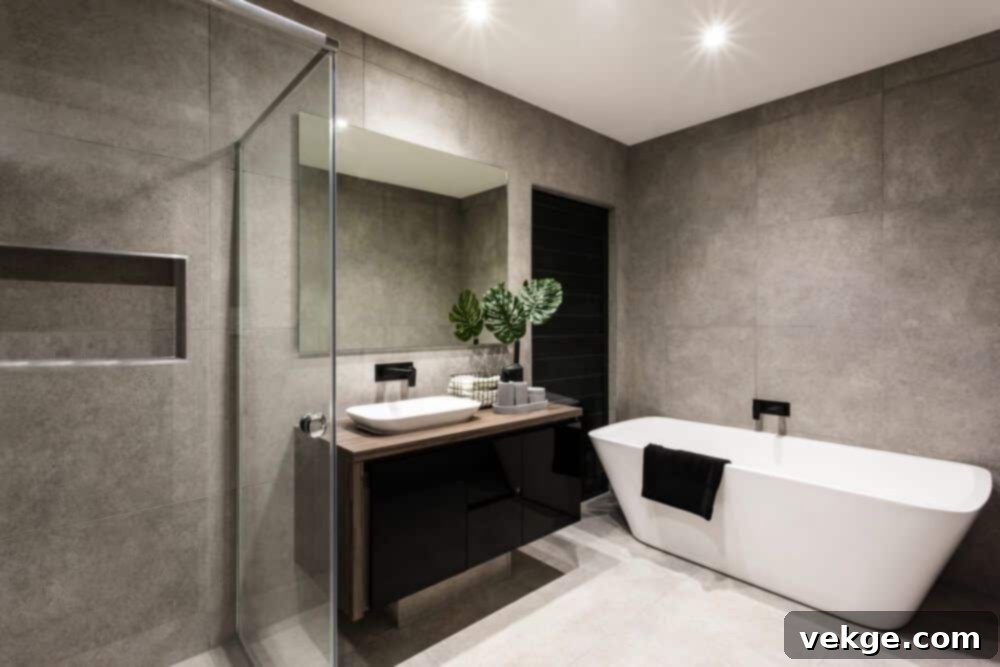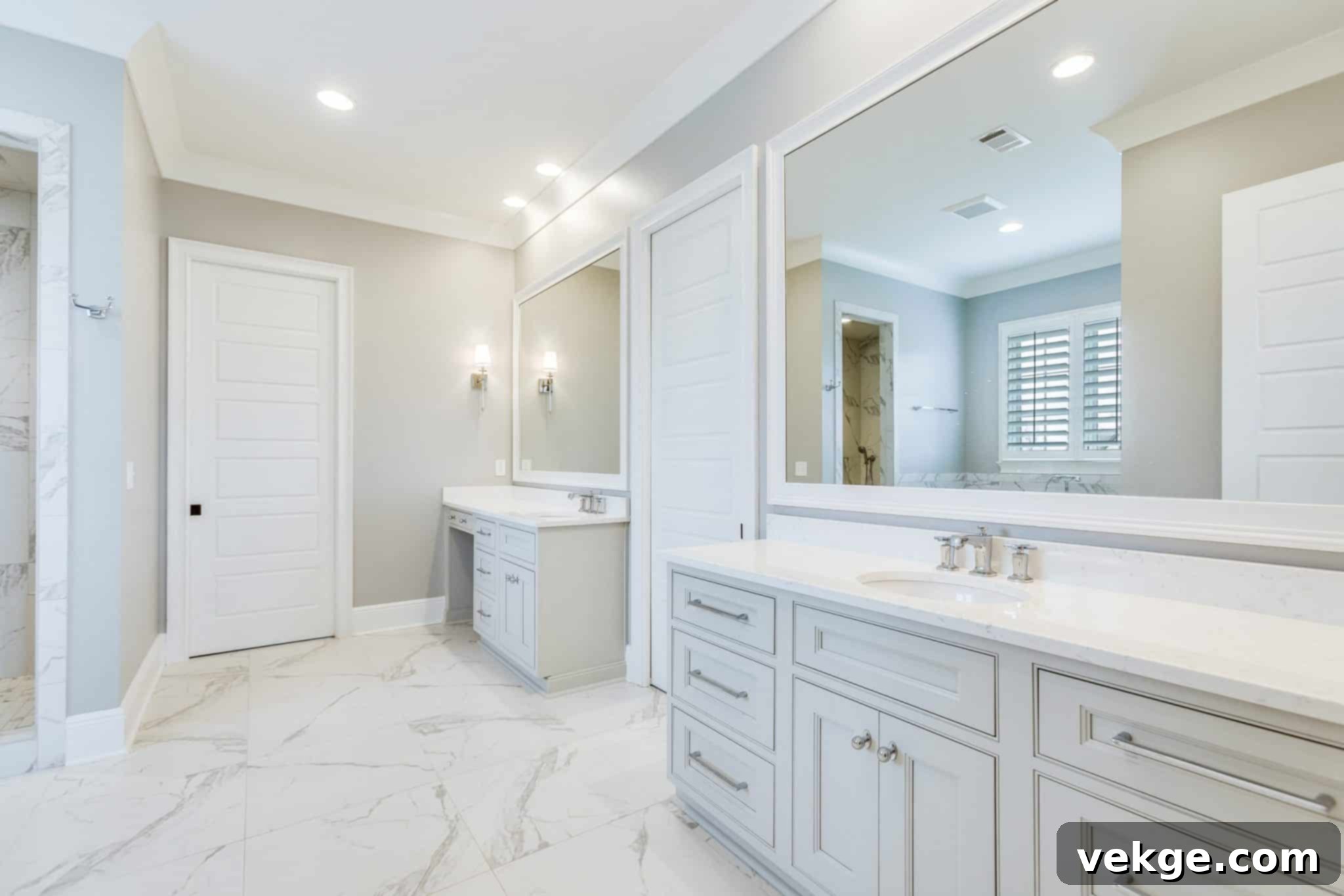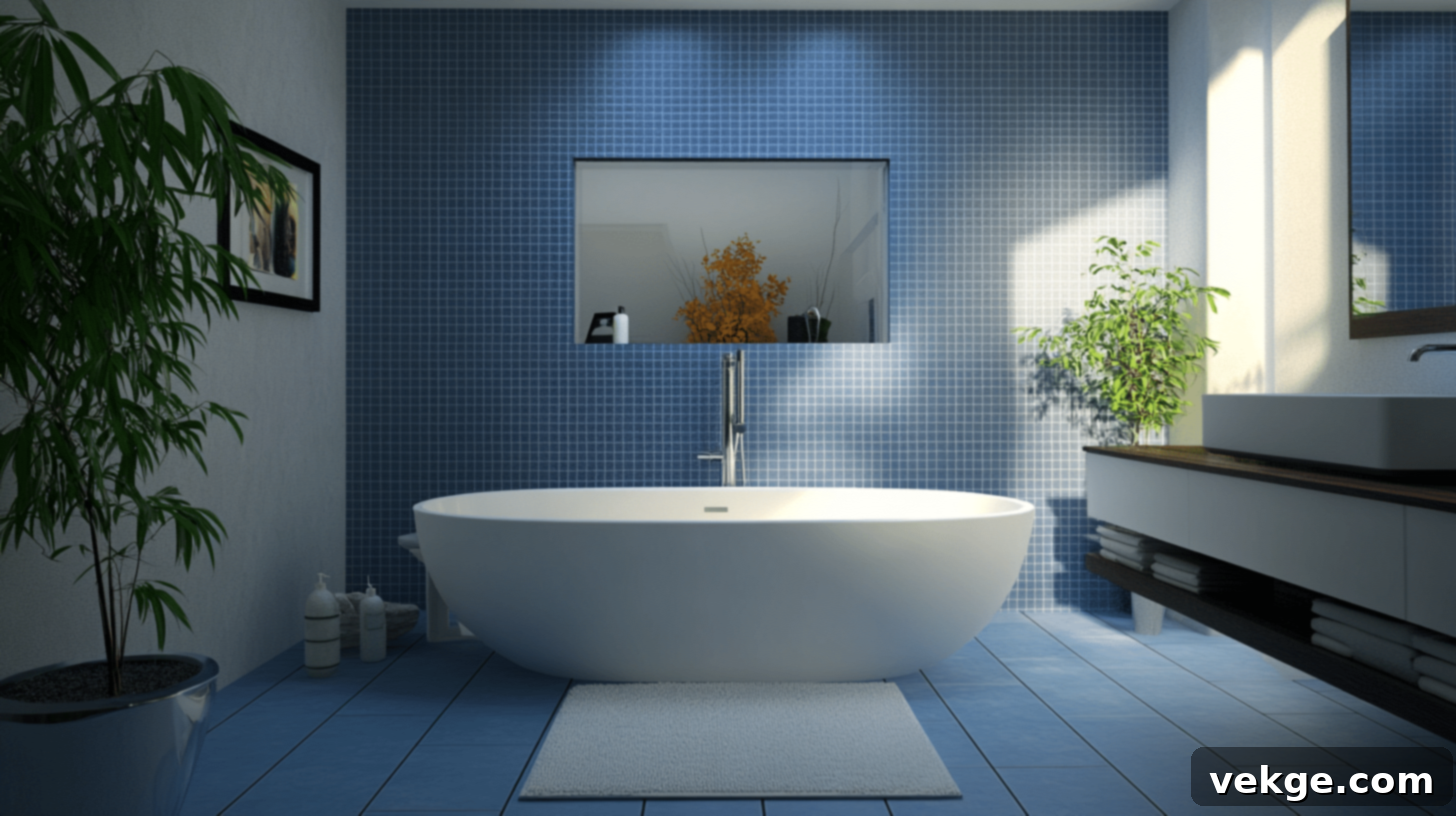Ultimate Guide to Bathroom Renovation: Design, Budget, and Essential Tips for Your Dream Space
Renovating your bathroom is more than just an upgrade; it’s an exciting opportunity to transform one of your home’s most vital spaces into a personal sanctuary of comfort and style. Whether you’re dreaming of a spa-like retreat, a highly functional family bathroom, or simply an aesthetic refresh, a successful bathroom renovation demands careful planning, a clear vision, and meticulous attention to detail. This comprehensive guide will walk you through essential tips, creative ideas, and crucial considerations to ensure your bathroom remodel project is a resounding success, adding both value and joy to your home.
1. Defining Your Renovation Goals: Vision and Purpose
Before any demolition begins or materials are selected, the very first step in your bathroom renovation journey should be to clearly define your goals. What do you truly want to achieve with this project? Are you aiming to:
- Upgrade outdated fixtures and aesthetics? Perhaps your bathroom feels stuck in a past decade, and you’re ready for a modern, refreshed look.
- Improve functionality and flow? Maybe the current layout is inefficient, or you need better organization and accessibility.
- Add much-needed storage? Clutter can quickly accumulate in bathrooms, making effective storage a key priority.
- Create a luxurious, spa-like atmosphere? Envision a tranquil space where you can unwind and rejuvenate after a long day.
- Increase your home’s resale value? A well-executed bathroom renovation is a significant investment that can yield excellent returns.
- Incorporate accessibility features (aging-in-place)? Planning for future needs ensures your bathroom remains functional for years to come.
Setting clear, specific goals will serve as your guiding compass throughout the entire renovation process. It will inform your design choices, help you prioritize spending, and ensure that the final outcome truly aligns with your vision and needs.
2. Setting a Realistic Budget: A Financial Blueprint for Success

A bathroom renovation can range from a minor cosmetic refresh to a complete structural overhaul, with costs varying significantly. Before you fall in love with expensive tiles or a designer vanity, assess your financial capacity and establish a realistic budget. This budget should be comprehensive, accounting for all potential expenses:
- Materials and Fixtures: This includes tiles, flooring, paint, vanity, countertops, toilet, sink, faucets, showerhead, bathtub/shower enclosure, and lighting fixtures. Researching costs for different quality levels is crucial here.
- Labor Costs: Unless you’re tackling significant DIY, you’ll need to budget for professional plumbers, electricians, tile setters, and general contractors. Obtain multiple quotes.
- Design Fees: If you’re working with an interior designer or architect, their fees will be a part of your overall budget.
- Permits and Inspections: Most significant renovations require permits to ensure compliance with local building codes. Factor in these administrative costs.
- Demolition and Waste Removal: Don’t forget the cost of tearing out old fixtures and disposing of debris properly.
- Unexpected Costs (Contingency Fund): Always allocate an additional 10-15% (or even 20% for older homes) of your total budget for unforeseen issues. This could include discovering mold, outdated wiring, or plumbing problems behind walls.
Sticking to your budget requires discipline. Prioritize your spending on high-impact items and consider cost-saving alternatives for less critical elements. For instance, keeping the existing layout can significantly reduce plumbing and electrical costs.
3. Strategic Layout Planning: Optimizing Your Space
The layout of your bathroom profoundly impacts its functionality and overall feel. If your current layout works efficiently and suits your needs, maintaining it can be a smart move, saving you considerable costs on moving plumbing lines and electrical wiring. However, if changes are necessary, consider their impact carefully:
- Water Supply and Drainage: Relocating a toilet, shower, or sink can be complex and expensive due to the need to reroute water lines and drainpipes.
- Electrical Wiring: New lighting, outlets, or heated flooring will require electrical modifications, which also impact costs and require professional installation for safety.
- Overall Flow and Usability: Think about how you move within the space. Is there enough clearance around fixtures? Does the door swing inhibit movement? For smaller bathrooms, consider space-saving solutions like corner sinks, sliding doors, or floating vanities. In larger bathrooms, you might consider creating distinct zones for showering, bathing, and vanity use.
Sketching out different layouts or using online planning tools can help visualize the space and ensure optimal utilization before any construction begins. Consider the ‘working triangle’ concept (similar to kitchens) for ease of use between the sink, toilet, and shower.
4. Choosing Durable and Water-Resistant Materials: Foundation of Longevity
Bathrooms are inherently high-moisture environments, making the selection of durable and water-resistant materials paramount. Prioritizing materials that can withstand humidity, water splashes, and temperature fluctuations will ensure the longevity and beauty of your renovation. Here are some excellent options:
- Flooring:
- Porcelain or Ceramic Tiles: These are gold standards for bathroom flooring. They are highly durable, non-porous (especially porcelain), water-resistant, and come in an incredible array of colors, patterns, and sizes.
- Vinyl Plank or Tile (LVT/LVP): A more budget-friendly option, modern luxury vinyl is excellent for bathrooms. It’s completely waterproof, slip-resistant, comfortable underfoot, and can mimic the look of wood or stone convincingly.
- Natural Stone (Marble, Granite, Travertine): Offers a luxurious look but requires sealing and more maintenance to prevent staining and water damage.
- Wall Finishes:
- Tiles: Again, porcelain and ceramic tiles are ideal for shower surrounds and splashbacks. They protect walls from water penetration and are easy to clean. Consider mosaic, subway, or large-format tiles to achieve different design aesthetics.
- Waterproof Paint: For areas outside the direct splash zone, high-quality, mold- and mildew-resistant paint is a great choice.
- Shower Panels: Acrylic or composite panels can offer a grout-free, seamless look for shower walls, making cleaning easier.
- Countertops:
- Quartz: Engineered stone, highly durable, non-porous, and resistant to stains and moisture. It comes in a vast range of colors and patterns.
- Granite: A natural stone that offers unique patterns. It’s very durable but requires periodic sealing to maintain its water resistance.
- Solid Surface: Non-porous, seamless, and easy to repair. It can be molded into integrated sinks for a sleek look.
- Cabinetry:
- Opt for water-resistant materials like marine-grade plywood, MDF (Medium-Density Fiberboard) with laminate or thermofoil coatings, or PVC-coated wood. These materials are less prone to warping, swelling, or mildew growth in humid environments compared to untreated solid wood. Look for sealed finishes and good ventilation inside cabinets.
- Fixtures (Faucets, Showerheads, Toilets): Invest in high-quality brass, stainless steel, or chrome fixtures. Not only do they look better, but their internal components are also more durable, preventing leaks and ensuring smooth operation for years.
5. Mastering Bathroom Lighting: Functionality and Ambiance

Lighting is often an overlooked element but plays a pivotal role in creating a functional, inviting, and aesthetically pleasing bathroom. A well-lit bathroom can make a small space feel larger and more open. Incorporate a mix of lighting types to cater to different needs and moods:
- Ambient Lighting: This provides general illumination for the entire space. Overhead fixtures like recessed downlights or flush-mount ceiling lights are common. Consider a central decorative fixture for a design statement.
- Task Lighting: Crucial for grooming activities, task lighting should be bright and shadow-free. Vanity lights, ideally placed on either side of the mirror at eye level, eliminate shadows better than a single light above the mirror. Integrated LED mirrors also offer excellent task lighting.
- Accent Lighting: Use accent lighting to highlight architectural features or create a specific mood. LED strips tucked under floating vanities, behind mirrors, or inside shower niches can add a modern, luxurious touch and serve as a subtle night light.
Furthermore, consider installing dimmer switches for all lighting circuits. This allows you to adjust light levels for different times of day – bright for morning routines and softer for a relaxing evening bath. Maximizing natural light through windows or skylights is also highly beneficial, making the space feel more open and vibrant.
6. Maximizing Storage Solutions: Keeping Clutter at Bay
A clutter-free bathroom is a serene bathroom. Efficient and well-planned storage is essential for keeping toiletries, towels, and cleaning supplies organized and out of sight. Consider these clever storage solutions:
- Wall-Mounted Cabinets or Floating Shelves: These save valuable floor space, especially in smaller bathrooms, and offer an airy, modern aesthetic.
- Vanity Units with Built-in Drawers and Organizers: Opt for vanities that offer smart storage solutions, such as deep drawers, pull-out shelves, and internal dividers to keep items neatly organized.
- Recessed Niches or Shelves: In-wall niches in shower areas or above the tub are perfect for storing shampoos, soaps, and bath accessories without protruding into the space.
- Over-the-Toilet Cabinets or Shelving: This often-unused vertical space can be transformed into additional storage for towels or decorative items.
- Medicine Cabinets: Modern medicine cabinets come in various styles, including recessed options that sit flush with the wall, providing hidden storage for everyday essentials.
- Linen Closets: If space allows, a dedicated linen closet within or adjacent to the bathroom provides ample storage for towels, bedding, and larger items.
Think vertically and creatively to make the most of every inch in your bathroom, ensuring everything has its place.
7. Essential Plumbing Considerations: A Professional Approach
Plumbing is the backbone of your bathroom, and getting it right is non-negotiable. Mistakes in plumbing can lead to costly leaks, water damage, and even structural issues. Here are critical plumbing tips to ensure a smooth, safe, and efficient renovation:
- Hire a Professional, Licensed Plumber: Unless you are an experienced and certified professional yourself, leave all significant plumbing tasks to a licensed plumber. They understand local building codes, safety regulations, and proper installation techniques, preventing leaks and compliance issues.
- Check and Upgrade Existing Pipes: During demolition, it’s the perfect opportunity to inspect your existing plumbing system. Look for any signs of wear, corrosion, or damage. Replacing old galvanized steel or polybutylene pipes with modern PEX or copper can prevent future leaks and improve water pressure.
- Ensure Proper Slope for Drains: This is vital for efficient water drainage. Drains must have a proper slope to prevent standing water in showers, sinks, and tubs, which can lead to mold, mildew, and unpleasant odors. A professional plumber will ensure correct grading.
- Choose Quality Fixtures Wisely: Invest in high-quality faucets, showerheads, shower valves, and toilet components. While cheaper options may save money upfront, they are often prone to leaks, drips, and premature failure, costing you more in the long run. Look for reputable brands with good warranties.
- Plan for Accessibility of Shut-Off Valves: Ensure that water shut-off valves for individual fixtures (like the toilet and sink) are easily accessible for future maintenance or emergencies.
- Consider Water Pressure: If you’ve always had low water pressure, now is the time to address it with your plumber. They can diagnose the issue and recommend solutions, such as a pressure booster or pipe upgrades.
8. The Importance of Ventilation and Waterproofing: Protecting Your Investment
These two elements are crucial for the long-term health and integrity of your bathroom and home:
- Proper Ventilation: Bathrooms generate a lot of moisture, which, if not properly ventilated, can lead to mold and mildew growth, peeling paint, warped wood, and damage to structural elements.
- Install an efficient exhaust fan (rated by CFM – cubic feet per minute) that is adequately sized for your bathroom’s square footage.
- Ensure the fan vents directly outside, not into an attic space, which can just transfer the moisture problem elsewhere.
- Consider a fan with a humidistat that automatically turns on when humidity levels rise.
- Thorough Waterproofing: Beyond just choosing water-resistant materials, true waterproofing involves creating a barrier to prevent water from penetrating walls and floors, especially in wet areas.
- Use waterproof membranes (liquid or sheet form) behind tiles in shower stalls and around bathtubs.
- Ensure proper installation of a shower pan with a sloped subfloor to direct water to the drain.
- Apply waterproof backer board (cement board or foam core) instead of drywall in wet zones.
- Properly seal all grout lines and joints with high-quality, mold-resistant caulk.
9. Incorporating Energy-Efficient and Sustainable Features

Making eco-conscious choices during your bathroom renovation can lead to significant savings on utility bills and contribute to a more sustainable home:
- Low-Flow Toilets and Water-Saving Faucets/Showerheads: These fixtures are designed to reduce water consumption without sacrificing performance. Look for EPA WaterSense labeled products.
- LED Lighting: Replace traditional incandescent or halogen bulbs with energy-efficient LED lighting. LEDs consume significantly less energy, have a much longer lifespan, and provide excellent illumination. Consider smart lighting systems for automated energy savings.
- Tankless Water Heater: If your budget allows, a tankless water heater heats water on demand, eliminating the energy waste associated with keeping a large tank of water constantly hot.
- Radiant Floor Heating: While an initial investment, radiant floor heating can provide comfortable, even warmth and can be more energy-efficient than traditional forced-air systems for heating the bathroom space.
- Sustainable Materials: Consider materials made from recycled content (e.g., glass tiles, recycled plastic composite lumber) or sustainably sourced wood for cabinetry.
10. Adding Personal Touches: Reflecting Your Style
Once the functional elements are in place, it’s time to infuse your personality into the space. Customize your bathroom to reflect your unique style and create an atmosphere you’ll love:
- Statement Vanity or Mirror: A unique vanity design, a vintage dresser repurposed as a vanity, or an unusually shaped/framed mirror can serve as a focal point.
- Color Palette and Textures: Choose colors that evoke the desired mood – calming blues for serenity, warm neutrals for coziness, or bold accents for vibrancy. Introduce textures through tiles, wood elements, or textiles.
- Accent Walls or Tiles: Use a different tile pattern, a pop of bold color, or a wallpapered accent wall to add character and visual interest.
- Greenery: Incorporate plants that thrive in high-humidity environments, such as ferns or peace lilies. They add a fresh, natural vibe and improve air quality.
- Accessories and Art: Select towel racks, soap dispensers, shower curtains, bath mats, and artwork that complement your chosen theme and color scheme. Don’t underestimate the power of thoughtful accessories to complete the look.
- Hardware: The finish and style of cabinet pulls, faucet handles, and towel bars can significantly impact the overall aesthetic.
11. Planning for the Future: Accessibility and Aging-in-Place
If this is your “forever home” or you anticipate future mobility needs, incorporating universal design principles and accessibility features into your renovation is a wise investment that adds long-term value and comfort:
- Walk-in or Roll-in Showers: Eliminate curbs to create an easy entry shower. Consider a built-in bench and grab bars for added safety and comfort.
- Wider Doorframes: A standard door is usually 24-28 inches wide. Expanding to 32-36 inches can accommodate wheelchairs or walkers.
- Lever-Style Faucets and Door Handles: These are much easier to operate for individuals with limited dexterity compared to knob-style fixtures.
- Comfort-Height Toilets: Toilets that are a few inches taller than standard models are easier to use for people with mobility issues.
- Reinforced Walls: Even if you don’t install grab bars immediately, reinforcing the walls behind potential grab bar locations allows for easy future installation without major renovation.
- Ample Maneuvering Space: Ensure there’s sufficient clear floor space for easy movement, especially in front of the toilet and vanity.
12. Timing, Scheduling, and Contractor Management
A well-managed timeline is key to a stress-free renovation. Plan your renovation schedule carefully, keeping these points in mind:
- Material Delivery Times: Some custom tiles, vanities, or specialty fixtures can have long lead times. Order these well in advance to avoid project delays.
- Contractor Availability: Reputable contractors are often booked months in advance. Secure your contractor early in the planning process.
- Phases of Renovation: Understand the typical sequence – demolition, rough-in plumbing/electrical, inspections, drywall, flooring, painting, cabinet installation, fixture installation, and final touches.
- Permits and Inspections: Factor in time for obtaining necessary permits and scheduling inspections at various stages of the project. Delays here can push back your entire timeline.
- Potential Disruptions: Prepare for temporary disruptions to your daily routine, especially if it’s your only bathroom. Consider setting up a temporary washing station or having access to another bathroom.
- Communication: Maintain open and regular communication with your contractor to stay updated on progress, address any issues promptly, and manage expectations.
By focusing on durable, water-resistant materials, thoughtful design, efficient plumbing, smart lighting, maximized storage, and personalized touches, you can create a bathroom space that is not only highly functional and sustainable but also a true pleasure to use for years to come. Always plan meticulously, conduct thorough research, and seek professional advice when necessary to ensure your bathroom renovation project runs smoothly and delivers the dream results you envision.
